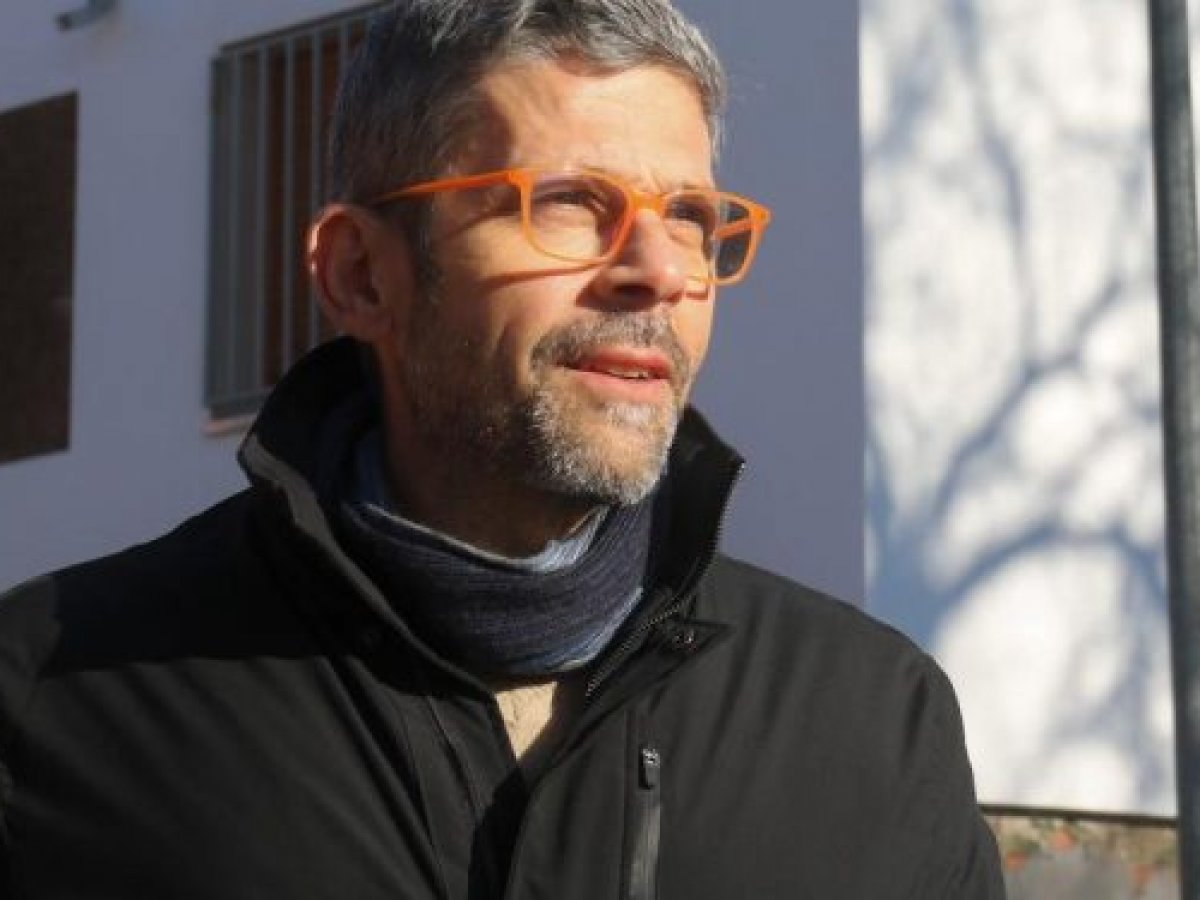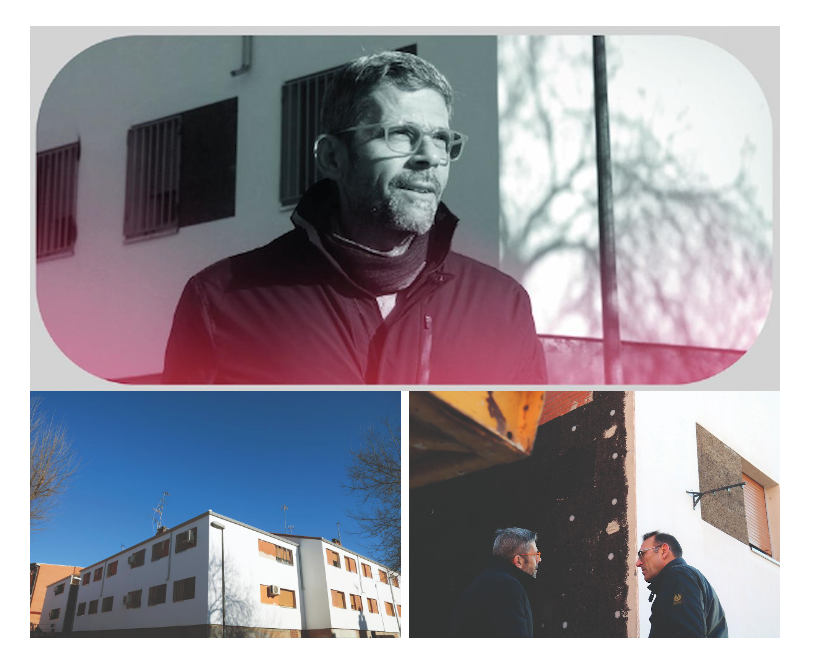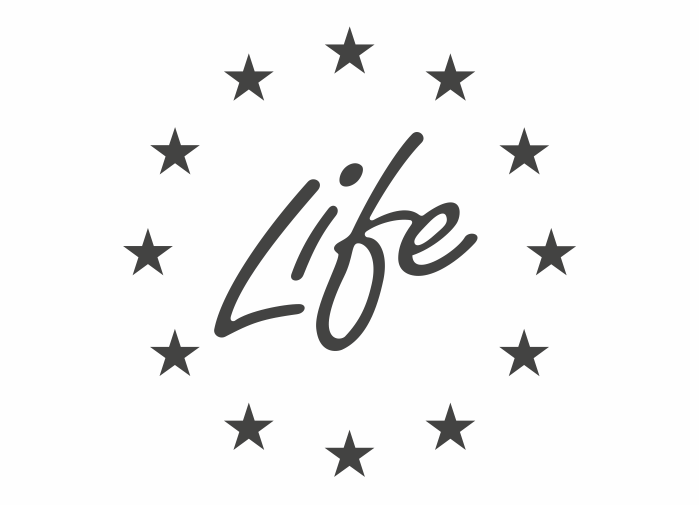
on 15 May 2023 1:00 AM
0 comments
With the aim of developing buildings with almost zero energy consumption with a low carbon footprint and low cost, using natural and recycled materials and products, the Junta de Extremadura promotes the LIFE ReNatural project, which tests and promotes new construction solutions in Spain and Portugal . These are nature-based solutions (Natured-Based Solutions) as tools for local adaptation to climate change in buildings and cities.
The building sector is one of the sectors that consumes the most resources in the European Union. According to data from the European Observatory for the Construction Sector (ECSO), buildings represent 40% of the total energy consumed in the euro zone, and produce 35% of all greenhouse gas emissions. In addition, the data indicates that waste from the construction sector accounts for 33% of the total waste generated. According to data from the Sectoral Resource Maps document, Spain is the EU country that consumes the most resources for construction, and Portugal is the 8th of the 27 members of the European Union.
In this context, the LIFE ReNatural NZEB project wants to test and promote new construction solutions to achieve buildings with almost zero energy consumption and a low carbon footprint, using natural and recycled materials, in Spain and Portugal. The General Directorate of Architecture and Building Quality of the Ministry of Mobility, Transport and Housing of the Junta de Extremadura promotes the introduction of sustainable construction materials composed of cork, rice husks, addition of biomass ash or kenaf insulation, a fibrous plant native to Africa and Asia.
This initiative is committed to the green and circular economy in the construction sector, through technologies made with natural and local material resources. The objectives of this project are to reduce CO2 emissions by 60%, as well as the embedded energy, the total amount consumed in the construction of a project, through the use of these natural and recycled materials with little industrialization. In addition, it aims to reduce demand and energy consumption by 80% during the period of use of the building, reduce its weight by 20%, as well as reduce the waste produced during its construction by 50%.
THE JUNTA DE EXTREMDURA HAS BEEN RESEARCHING FOR A DECADE ON HOW TO REHABILITATE HOUSES WITH PROXIMITY MATERIALS THAT TURN THE PLACES WHERE WE WORK, RESIDE AND LIVE INTO SUSTAINABLE AND ENERGY EFFICIENT SPACES. IS THE PHILOSOPHY OF THE LIFE RENATURAL PROJECT?
The project seeks to promote the use of natural and recycled materials in rehabilitation and new construction to achieve almost zero-consumption buildings with a low carbon footprint, as well as introduce sustainable construction materials and technologies and promote the green and circular economy in the construction sector. the construction. All this with the aim of improving the quality of life and comfort of residents, while committing to the decarbonisation of our building stock to favor the reduction of final energy consumption and carbon dioxide emissions to through increased efficiency that is linked to energy savings.
WHAT CONSTRUCTIVE SOLUTIONS HAVE BEEN PROVIDED SO FAR?
In a first phase, the project has carried out a basic characterization of natural materials such as kenaf, cork dust, biomass ash, granulated cork, rice husks and paulownia wood with the aim of studying their characteristics for use as materials. of construction.
During a second phase, a technical, mechanical and durability characterization of construction products has been carried out, among others compressed earth blocks (BTC), clay panels, rice husk bricks, cork mortar and ash mortar. of biomass in order to establish its properties and aptitudes for its use in construction.
In a third phase, constructive solutions have been tested, on a real scale, in the EDEA-CICE demonstrator buildings in Cáceres, to find out the behavior of materials in a real environment and compare their results, mainly studying their thermal and acoustic behaviour. The tested systems have been:
- SATE with cork panels.
- Insufflation of recycled paper insulation (cellulose) in an air chamber.
- BTC + kenaf + rice husk + clay plate
- BTC + recycled paper + rice husk + clay plate
- BTC + kenaf + cork + clay plate
- BTC + recycled cotton + cork + clay plate
- BTC + kenaf + clay plate
- BTC + recycled paper + cork + clay plate.
FINALLY, ARE DEMONSTRATION EXPERIENCES BEING CARRIED OUT ON REAL BUILDINGS APPLYING THESE MATERIALS AND CONSTRUCTION SOLUTIONS IN THE FOLLOWING PROTOTYPES:
- Rehabilitation of 4 Public Promotion Houses in Santa Engracia, Badajoz.
- Rehabilitation of 16 block VPP in San Lázaro, Mérida (Badajoz).
- Rehabilitation of a building for public use in La Bazana-Jerez de los Caballeros, (Badajoz).
- Construction of 3 VPP in Ribera del Fresno (Badajoz).

CIRCULARITY. The project seeks to promote the use of natural and recycled materials in rehabilitation and new construction to achieve almost zero-consumption buildings with a low carbon footprint.
ARE THESE MATERIALS WHOSE USE ALSO PROMOTES THE DEVELOPMENT OF LOCAL COMMUNITIES? HERE LIES ITS SOCIAL AND INTEGRATORY CHARACTER?
One of the environmental premises of the project is the 60% reduction in embedded energy and CO2 emissions in the construction and rehabilitation of the pilot buildings. To achieve these objectives, it is essential to use materials manufactured in the vicinity of the buildings and that imply low energy needs in their manufacture and also in transport until their commissioning.
On the other hand, the use of some of the natural materials studied in the project aims to provide a solution to waste products such as rice husks or biomass ashes, or as in the case of kenaf, where the feasibility of planting has been studied. of this type of crops as an alternative to tobacco cultivation. We understand that these actions are those that contribute to the social character of the project, as well as in the pilot buildings on which energy rehabilitation is being undertaken, where two of them correspond to public housing, located in two neighborhoods such as the neighborhood of Santa Engracia in Badajoz and the neighborhood of San Lázaro in Mérida.
IN THE FUTURE, WILL THE ENTIRE HOUSING CONSTRUCTION PROCESS BECOME LOCAL?
This transformation is complicated due to globalization, but if we want to reduce the carbon footprint in the construction process, we must reduce emissions starting with transport, which implies a transformation of raw materials closer to the places of consumption, as well as using raw materials that require less transformation for their use as construction material.
WHAT PROCESS IS FOLLOWED TO CERTIFY THE SUITABILITY OF THESE MATERIALS AND EXPORT THE MODEL TO OTHER COMMUNITIES?
A basic characterization of the raw materials and a technical characterization of the construction materials have been carried out and, on the other hand, guides have been prepared for the CE marking of some products so that they can be used in construction, such as earthen blocks. compressed, cork mortars, cork granules and clay panels.
TO WHAT EXTENT IS PUBLIC-PRIVATE COLLABORATION ESSENTIAL TO CARRY OUT THIS PROJECT?
Sometimes, the companies that make this type of product are small and do not have qualified personnel to advise and guide them in order to obtain, for example, the CE marking of the products they manufacture. In our case, we have collaborated with local companies that manufacture some of these products and we have advised them on the process and procedures to carry out to obtain the CE marking for their products.
DESPITE THE EUROPEAN UNION FINANCING THE IMPROVEMENTS IN THE ENERGY EFFICIENCY OF THE BUILDINGS, THE REALITY IS THAT THE HOUSING STOCK DOES NOT COMPLY WITH THE ENERGY EFFICIENCY CRITERIA. WHAT ARE THE MAIN OBSTACLES? IS THERE A LACK OF AWARENESS OR INFORMATION?
One of the obstacles is the configuration of the existing building stock, since facing the rehabilitation of a multi-family building, constituted as a horizontal division, requires reaching an agreement with the majority of the residents and this is a handicap for this type of building.
In single-family homes, a greater movement is observed, in fact, most of the aid for residential energy rehabilitation that is currently being processed by this General Directorate, under the Recovery, Transformation and Resilience Plan, corresponds to this building typology.
We believe that it is not a problem of lack of awareness, especially with the situation we are currently experiencing with the increases in energy costs, where citizens are increasingly aware of the need to reduce energy consumption of the house.
IS REFURBISHMENT THE LEVER OF TRANSFORMATION FOR THE CONSTRUCTION SECTOR?
The park built in Spain has a considerable age. It must be taken into account that the first requirements aimed at providing insulation to the elements that make up the building envelope appear in 1979, and until 2006, with the appearance of the Technical Building Code, these requirements were very basic. We can indicate that most of the existing buildings currently have thermal and acoustic insulation systems, both on their facades, windows and roofs, well below the minimum required today that guarantee thermal comfort inside with low energy consumption.
The current situation, where priority is being given in a sustainable way to the rehabilitation of our homes, to the regeneration of our urban fabrics, confirms that rehabilitation is being promoted in a definitive way. The current lines of help for the comprehensive rehabilitation of our homes are decisive; There has never been so much aid intensity, nor so much money available. It will necessarily be a turning point in the rehabilitation of our building stock.
HOW IMPORTANT IS THE EXISTENCE OF EUROPEAN FUNDING TO PROMOTE INNOVATION IN HOME CONSTRUCTION?
In the economic context in which we find ourselves, we understand that it is vital to have aid that encourages the necessary transformations, since the cost of energy rehabilitation is significant and its amortization must be understood in the medium term.
In addition to materials, quality control is becoming increasingly necessary in buildings with aspects ranging from thermal or acoustic conditions to indoor air quality. Is this control being exercised effectively?
Quality control, both in the phase of reception of materials and in the commissioning of the same, is essential to guarantee the required and projected conditions. In this sense, the work of the facultative direction of the works, as well as the work of the quality control laboratories of the building to carry out trials and tests, is of great importance.
With this objective, we are deploying the installation of air quality control sensors, comfort parameters (temperature and humidity) and energy consumption in homes that can give us data on consumption habits, as well as being able to compare situations before and after. of energy efficiency interventions.
The Recovery, Transformation and Resilience Plan of the Junta de Extremadura is committed to improving social housing to increase the quality of life of citizens. How is sustainability, efficiency and comfort implemented in public housing?
In the same way as in free housing, it is essential that both new construction and rehabilitation of a certain magnitude are carried out under the protection of a technical project that adapts, at least, to the regulatory requirements of the current Technical Building Code for thus improve the comfort of people residing in social housing and reduce their energy bill.
PROPOSES THE ESTABLISHMENT OF A BUILDING BOOK SO THAT TECHNICIANS CAN ADVISE THE COMMUNITIES OF OWNERS IN THE RENOVATION PROCESS. WHAT PARAMETERS WOULD YOU CONSIDER? HOW WOULD A MEASURE OF THIS NATURE BE APPLIED WHEN IT IS NOT EVEN POSSIBLE TO STANDARDIZE THE ENERGY CERTIFICATE?
The existing building book (LEE) incorporates the Building Evaluation Report (IEE), the Energy Efficiency Certificate (CEE) and a proposal for improvements that addresses both the constructive deficiencies detected in the evaluation of the building and the energy improvements that are proposed in the CEE with a valuation of the same and a forecast of amortization.
The LEE is a tool to plan and help decision-making, especially in the communities of owners to be able to address actions aimed at the energy rehabilitation of buildings. We do not believe that the energy certificate is a mere formality. We understand that citizens are increasingly aware of the importance of energy consumption in a home, therefore, as with household appliances, when buying or renting a home, more and more attention is paid to its energy rating due to the implications that it will have for the family economy in the future.
ALSO, THE OBJECTIVE IS TO PROMOTE AFFORDABLE RENT TO ENSURE THE RIGHT TO HOUSING. HOW DO YOU GET IT IN AN UNCONTROLLED MARKET?
The model for promoting affordable rental housing by the Government of Spain is based on the need to establish limits on rental prices, as well as on the income of these living units. With this, it is intended to provide the market with a sufficient number of affordable rental homes that come to try to stabilize and control prices.
IS AN INTEGRAL APPROACH TO REHABILITATION, RENEWAL AND REGENERATION POSSIBLE WITHIN THE FRAMEWORK OF URBAN AGENDAS?
Not only is it possible, but it is the way, the road map that we must use. Only from a holistic point of view will we be able to achieve a truly comprehensive rehabilitation of our homes and our urban spaces.
WHAT CIRCUMSTANCES PREVENT OUR CITIES AND URBAN ENVIRONMENTS FROM BEING MORE AND MORE HUMAN SUSTAINABLE?
Fortunately, I think we should ask ourselves what circumstances prevented it, given that right now the obligatory trend is to humanize our cities and environments, making them equally more sustainable. We are aware of things done wrong before, the result of a lack of complete analysis of all the circumstances, the product of an immediacy both in the building process and in the planning process.
The pressure of the housing promotion did not allow a previous and complete analysis. The mobility model is changing completely, moving the car away from many of our urban centers, promoting sustainable mobility and gaining ground from the car in favor of pedestrians, humanizing our immediate environment.



